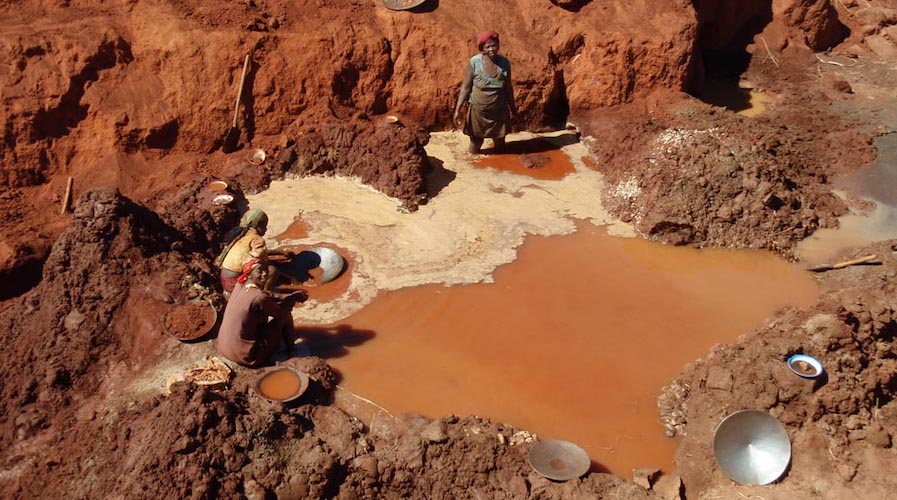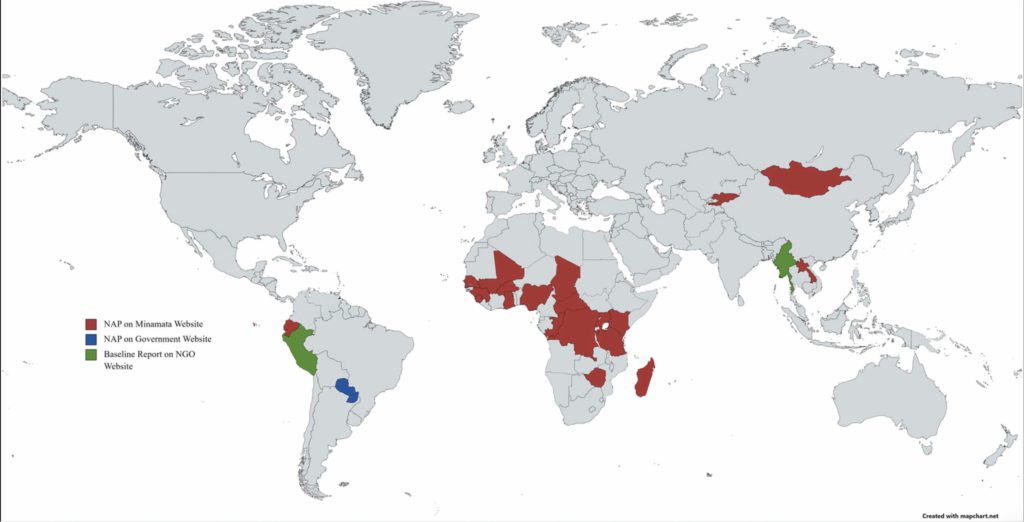Staff Writer | March 26, 2023 |

Small-scale gold mining in Madagascar. (Reference image by Global Environment Facility, Flickr.)
A recent study of baseline mercury emission estimates by artisanal gold mining reported by 25 countries—many in developing African, South American and Asian nations—found that these estimates rarely provide enough information to tell whether shifts in the rate from one year to the next were the result of actual change or data uncertainty.

Key variables—like how the country determines the amount of its gold production—can result in vastly different baseline estimates. Yet, countries often don’t report this range of possible estimates.
According to the study, about 15 million artisanal and small-scale gold miners around the world risk their lives every day facing hazardous working conditions that include constant exposure to mercury—a potent neurotoxin.
Mercury vapours cause debilitating effects on the nervous, digestive and immune systems, lungs and kidneys, and may be fatal.
The hazardous gold mining process that employs mercury also accounts for roughly 40% of all man-made mercury emissions, making it the largest source of this type of pollution, UN data show.
“To make effective and impactful mercury interventions and policies, you must first make sure you have the baseline emission estimate right,” Kathleen M. Smits, co-author of the new study analyzing the issue, said in a media statement. “Providing more transparency in their reporting would help with that.”
Smits, who works at the Southern Methodist University, joined civil engineers from the University of Texas at Arlington and the US Air Force Academy for this research, which was recently published in the journal Environmental Science and Policy.
Deficient data
The group analyzed 22 countries’ national action plans (NAP), which contained their annual baseline estimates assembled under the Minamata Convention and posted on the organization’s website. The team also looked at three additional countries with pertinent information posted to national government or non-governmental websites.
Launched in 2017, the Minamata Convention aims to restrict and limit the trading of mercury. Specifically, the Convention requires its 137 signatories to stop all trade in metallic Hg, restrict the opening of new primary Hg mines, stop domestic Hg production by 2032, and ban the production and trade of Hg-added products, such as thermometers and Hg-vapor lamps, by 2020.
Baseline mercury emission estimates seek to determine how many kilograms of mercury pollution are injected into the atmosphere each year from the practice of artisanal gold mining. To do that, countries calculate how much gold was found by miners—and therefore an approximation of how much mercury was used to get it.
The researchers explained that countries primarily collect that information using interviews with miners, gold and mercury traders and other key players in the gold mining business; ratios that calculate the mercury to gold ratio; previous research, and field visits to known mining locations
.

Map of countries with published NAPs on Minamata Convention’s official website (red), national government websites (blue), and NGO (Non-Governmental Organization) websites (green). (Image from Environmental Science & Policy.)
But there are several problems with the way those estimates are currently calculated.
One of the main issues is the fact that there isn’t enough data on gold production estimates. Fifteen countries, like the Central African Republic and Madagascar, only provide one source for the calculation of the gold production rate. Yet, as Zimbabwe demonstrates, different data sources can provide vastly different values.
In a separate study, Zimbabwe reported that extraction, processing and miners’ income information resulted in gold production estimates varying between 11% and 55% using 2012 mining data and 9% to 35% using 2018 mining data. The African country’s goal for reduced mercury emissions is a smaller percentage than the range of uncertainty the study found for gold production.
“Countries aren’t unified in how they select important metrics. The mercury to gold ratio (Hg:Au) is used to estimate the amount of mercury used to produce a given amount of gold,” the researchers noted. “A different ratio can result in different reasonable estimates for how much mercury was emitted.”
In the study, five different ways were listed as a ratio for Hg:Au, and a few countries cited more than one in their national action plan. Similarly, different countries used different techniques to come up with the national estimate of mercury emitted, some based on a small sample of mines and some without verifying the data with other sources.
Smits emphasized that countries must do a better job of accounting for these variables if they want to draft more meaningful mercury reduction targets in their national action plans.
“If you just take a look at the baseline mercury emission estimate process, it is clear that the NAP program will not achieve its goal of reducing mercury emissions if they continue with the current approach,” she said.
But there are several problems with the way those estimates are currently calculated.
One of the main issues is the fact that there isn’t enough data on gold production estimates. Fifteen countries, like the Central African Republic and Madagascar, only provide one source for the calculation of the gold production rate. Yet, as Zimbabwe demonstrates, different data sources can provide vastly different values.
In a separate study, Zimbabwe reported that extraction, processing and miners’ income information resulted in gold production estimates varying between 11% and 55% using 2012 mining data and 9% to 35% using 2018 mining data. The African country’s goal for reduced mercury emissions is a smaller percentage than the range of uncertainty the study found for gold production.
“Countries aren’t unified in how they select important metrics. The mercury to gold ratio (Hg:Au) is used to estimate the amount of mercury used to produce a given amount of gold,” the researchers noted. “A different ratio can result in different reasonable estimates for how much mercury was emitted.”
In the study, five different ways were listed as a ratio for Hg:Au, and a few countries cited more than one in their national action plan. Similarly, different countries used different techniques to come up with the national estimate of mercury emitted, some based on a small sample of mines and some without verifying the data with other sources.
Smits emphasized that countries must do a better job of accounting for these variables if they want to draft more meaningful mercury reduction targets in their national action plans.
“If you just take a look at the baseline mercury emission estimate process, it is clear that the NAP program will not achieve its goal of reducing mercury emissions if they continue with the current approach,” she said.
No comments:
Post a Comment